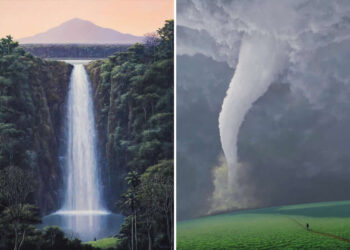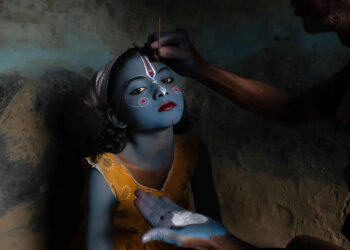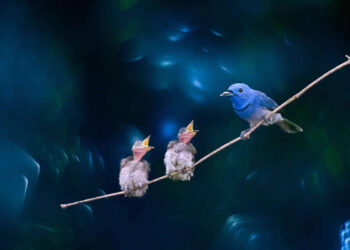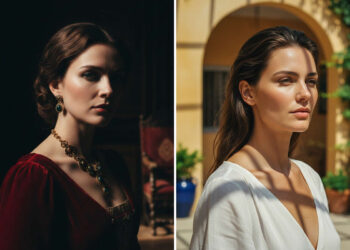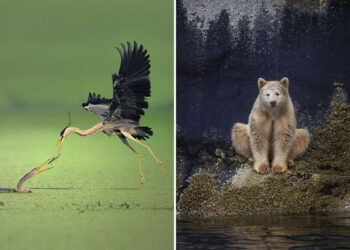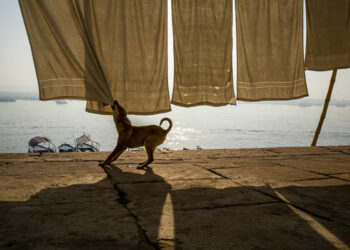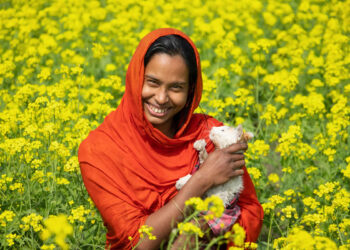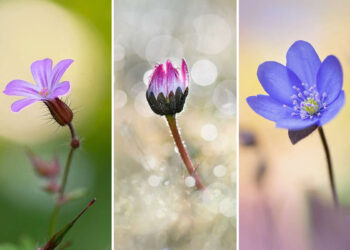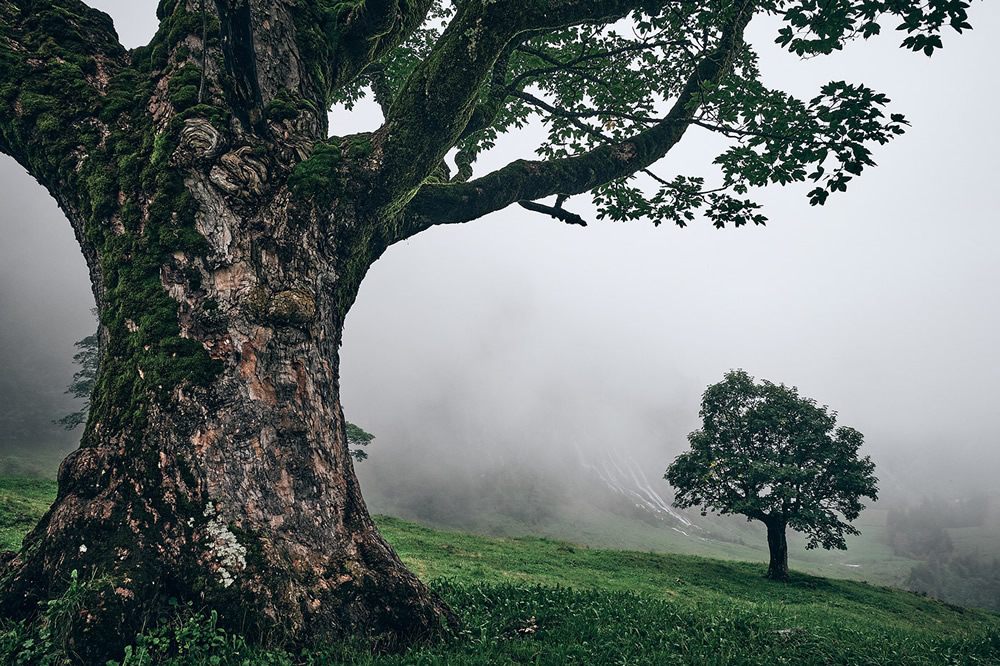40 inspiring photography quotes from Brazilian documentary photographer Sebastião Salgado.
Sebastião Salgado is a Documentary Photographer and Photo Journalist from Brazil. He was born on 08th February 1944 in Aimores, Brazil. When we think of photographer Sebastião Salgado, what comes to mind are the words “humanitarian”, “humanist”, and “concerned photographer”.
Sebastião Salgado was a student of economics who completed his Ph.D. coursework in Paris, France, and then decided to abandon academia for photography. He chose the power of the image over the power of the word to show the plight of the poor, the disadvantaged, the despised, and the abandoned people of the world. His photographs directly confront injustice, inhumanity, and horror with boundless compassion and empathy.
Here in this post, you can find some inspiring quotes from the master.
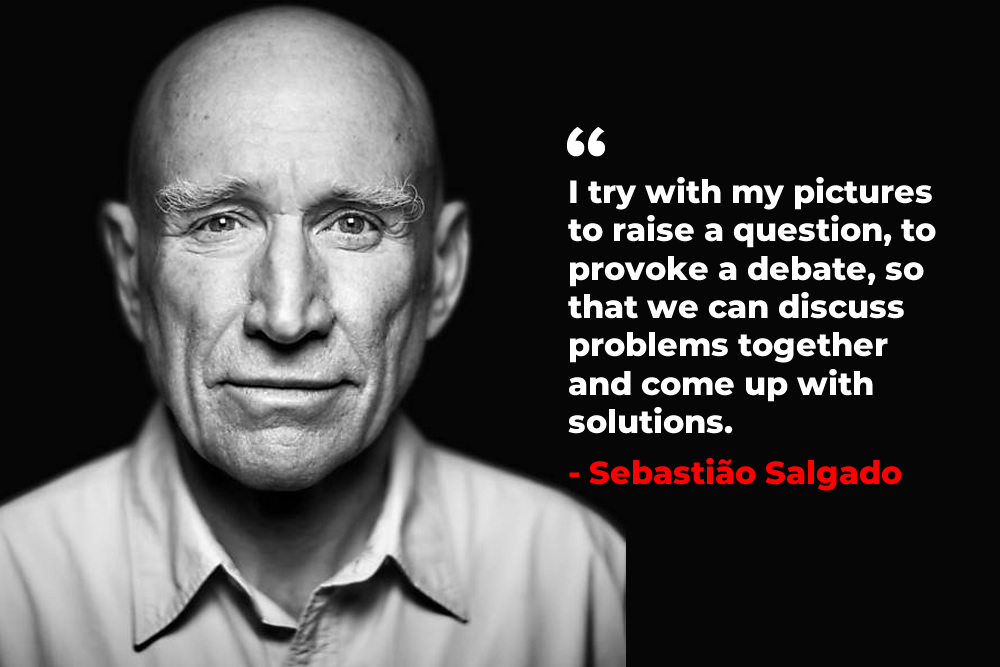
#1 “It’s more important for a photographer to have very good shoes than to have a very good camera.”
#2 “I am a former economist. I never went to photography school to learn photography.”
#3 “Photography is the language that gives people the opportunity to see what you saw.”
#4 “I have a way to photograph. You work with space, you have a camera, you have a frame, and then a fraction of a second. It’s very instinctive. What you do is a fraction of a second, it’s there and it’s not there. But in this fraction of a second comes your past, comes your future, comes your relation with people, comes your ideology, comes your hate, comes your love – all together in this fraction of a second, it materializes there.”
#5 “I don’t want anyone to appreciate the light or the palette of tones. I want my pictures to inform, to provoke discussion – and to raise money.”
#6 “You need to be accepted by reality.”
#7 “Photography is much more than just taking pictures – it is a way of life. What you feel, what you want to express, is your ideology and your ethics. It’s a language that allows you to travel over the wave of history.”
#8 “It’s not the photographer who makes the picture, but the person being photographed.”
#9 “When I was just starting out, I met Cartier-Bresson. He wasn’t young in age but, in his mind, he was the youngest person I’d ever met. He told me it was necessary to trust my instincts, be inside my work, and set aside my ego. In the end, my photography turned out very different to his, but I believe we were coming from the same place.”
#10 “Photography is deeply subjective. It is my way of seeing – my pictures are made with my political and ideological ideas.”
#11 “I’m not an artist. An artist makes an object. Me, it’s not an object, I work in history, I’m a storyteller.”
#12 “What I want is the world to remember the problems and the people I photograph. What I want is to create a discussion about what is happening around the world and to provoke some debate with these pictures. Nothing more than this. I don’t want people to look at them and appreciate the light and the palate of tones. I want them to look inside and see what the pictures represent, and the kind of people I photograph.”
#13 “I try with my pictures to raise a question, to provoke a debate, so that we can discuss problems together and come up with solutions.”
#14 “It is a privilege to be a photographer – to have the opportunity to be there.”
#15 “When you capture a story, it must be your story, your choice. You must have 100 percent identification with your story – a patience with the subject that you shoot.”
#16 “I have been photographing the portrait of an end of an era, as machines and computers replace human workers. What we have in these pictures is an archeology.”
#17 “I’m not a religious person. The language of photography is symbolic.”
#18 “I have a partner that I work with: my wife. The most important thing in all my life was the day that I met my wife. I met her in 1964 and every story that I photographed, we considered, we discussed together. We were motivated by the same ethical and political reasons to do these stories.”
#19 “The language that photography has is a formal language. Any photographer is doing something formal. If it’s formal, then it must be an aesthetic way to communicate.”
#20 “When you work fast, what you put in your pictures is what your brought with you — your own ideas and concepts. When you spend more time on a project, you learn to understand your subjects. There comes a time when it is not you who is taking the pictures. Something special happens between the photographer and the people he is photographing. He realizes that they are giving the pictures to him.”
#21 “The time spent photographing in the field is only one percent of the time. The time I take to consider – to prepare, to design, to have the concept – is a full lifetime. That’s the point with photography.”
#22 “The picture is not made by the photographer, the picture is more good or less good in function of the relationship that you have with the people you photograph.”
#23 “I work alone. Humans are incredible, because when you come alone, they will receive you, they accept you, they protect you, they give you all things that you need, and they teach you all things you must know. When you come with two persons or three people, you have a group in front of them. They don’t discuss with the new people what is important to them…”
#24 “When you see these pictures they are much more than just nice pictures, than just a story. It is my life.”
#25 “I am not a believer. But if there is one power superior that can guide us, for me, it is evolution. How we came to be what we are today – what a culmination of experience we have. There is a big power there.”
#26 “I tell a little bit of my life to them, and they tell a little of theirs to me. The picture itself is just the tip of the iceberg.”
#27 “There are moments that you suffer a lot, moments you won’t photograph. There are some people you like better than others. But you give, you receive, you cherish, you are there. When you are really there, you know when you see the picture later what you are seeing.”
#28 “I very much like to work on long-term projects…There is time for the photographer and the people in front of the camera to understand each other. There is time to go to a place and understand what is happening there. …When you spend more time on a project, you learn to understand your subjects. There comes a time when it is not you who is taking the pictures. Something special happens between the photographer and the people he is photographing. He realizes that they are giving the pictures to him.”
#29 “I don’t believe a person has a style. What people have is a way of photographing what is inside them. What is there comes out.”
#30 “I discovered that close to half the planet is ‘pristine.’ We live in towns such as London, Paris or Sao Paulo and have the impression that all the pristine areas are gone, but they are not.”
#31 “The picture is not made by the photographer, the picture is more good or less good in function of the relationship that you have with the people you photograph.”
#32 “We are animals, born from the land with the other species. Since we’ve been living in cities, we’ve become more and more stupid, not smarter. What made us survive all these hundreds of thousands of years is our spirituality; the link to our land.”
#33 “More than ever, I feel that the human race is one. There are differences of colour, language, culture and opportunities, but people’s feelings and reactions are alike. People flee wars to escape death, they migrate to improve their fortunes, they build new lives in foreign lands, they adapt to extreme hardship….”
#34 “In the end, the only heritage we have is our planet, and I have decided to go to the most pristine places on the planet and photograph them in the most honest way I know, with my point of view, and of course it is in black and white, because it is the only thing I know how to do.”
#35 “In GENESIS, my camera allowed nature to speak to me. And it was my privilege to listen.”
#36 “I believe that the average person can help a lot, not by giving material goods but by participating, by being part of the discussion, by being truly concerned about what is going on in the world.”
#37 “We are animals, born from the land with the other species. Since we’ve been living in cities, we’ve become more and more stupid, not smarter. What made us survive all these hundreds of thousands of years is our spirituality; the link to our land.”
#38 “We live in a society where we never prepare people to be a community.”
#39 “Most of the information we now get is through television and is mutilated. Photography offers the opportunity to spend much more time on a topic. It’s relatively cheaper medium, and can allow a photographer really to live in another place, show another reality, get closer to the truth.”
#40 “Let’s build Paradise again.”
You can find more info about Sebastiao Salgado on the web:

